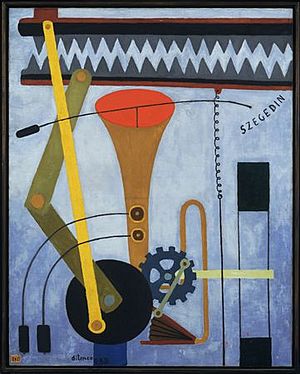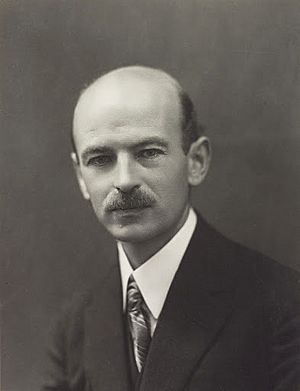Georges Ribemont-Dessaignes facts for kids
Georges Ribemont-Dessaignes (born June 19, 1884 – died July 9, 1974) was a French writer and artist. He was an important part of the Dada art movement. Georges was born in Montpellier and passed away in Saint-Jeannet.
He created many early paintings. He also wrote plays, poems, and even stories for operas. He helped with a magazine called Literature. This magazine was about Dada and later, another art style called Surrealism.
What was Dada?
Dada was an art movement that started around 1916. Artists who were part of Dada wanted to challenge traditional art. They often used humor and nonsense in their work. They believed that art should be free and not follow strict rules. Georges Ribemont-Dessaignes was one of the key figures in this exciting movement.
His Creative Works
Georges Ribemont-Dessaignes was very creative. He worked in many different art forms. He was known for his paintings, but he also wrote a lot.
Plays and Operas
He wrote several plays for the theater. Two of his famous plays are The Emperor of China (from 1916) and The Mute Canary (from 1919). He also wrote the stories for two operas. These were The Knife's Tears (1926) and The Three Wishes (1926). A Czech composer named Bohuslav Martinů wrote the music for both of these operas.
Novels and Books
Georges Ribemont-Dessaignes also wrote many novels. Some of his well-known books include:
- L'Autruche aux yeux clos (1924)
- Ariane (1925)
- Le Bar du lendemain (1927)
- Céleste Ugolin (1928)
- Monsieur Jean ou l'Amour absolu (1934)

See also
 In Spanish: Georges Ribemont-Dessaignes para niños
In Spanish: Georges Ribemont-Dessaignes para niños


